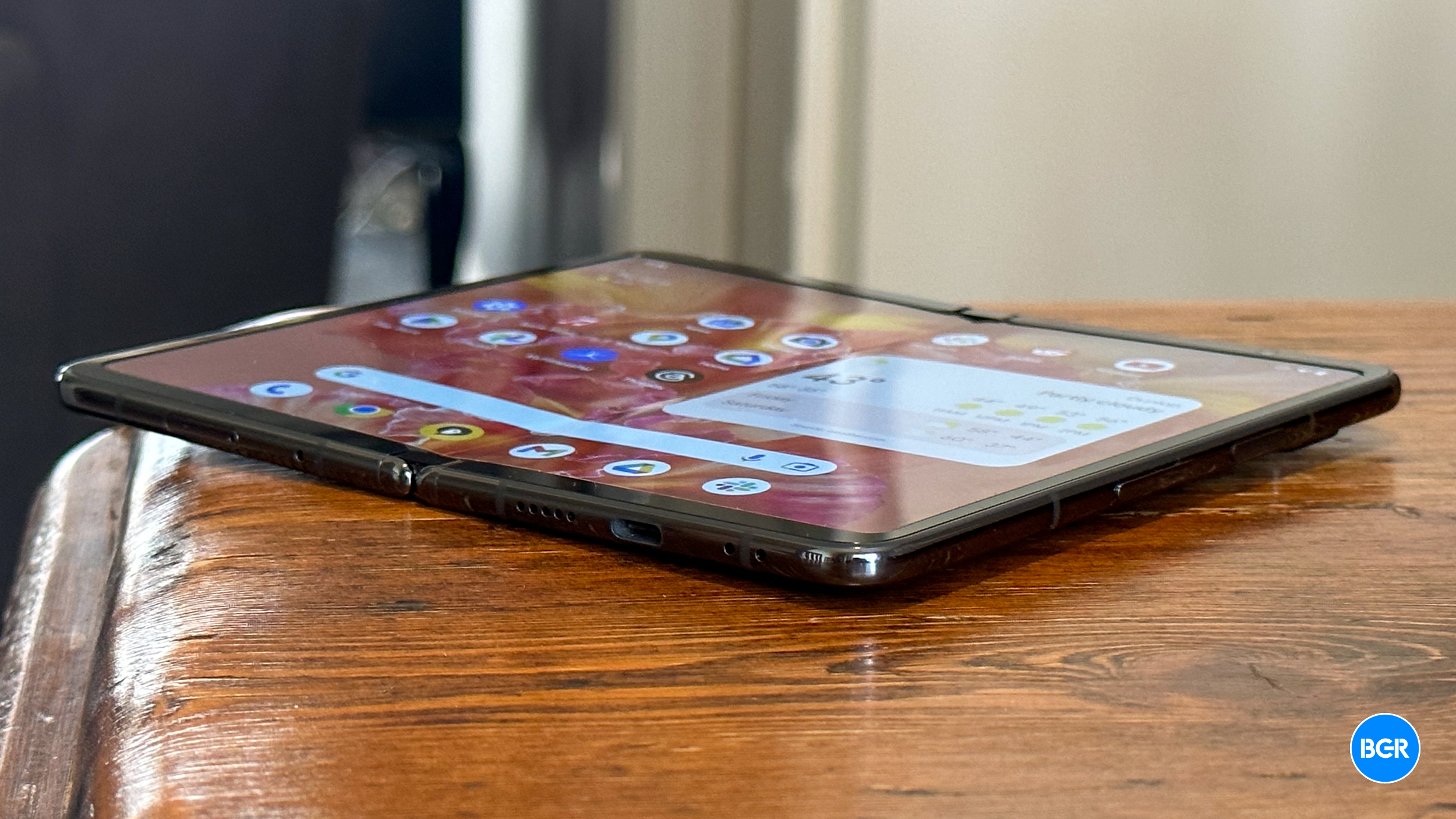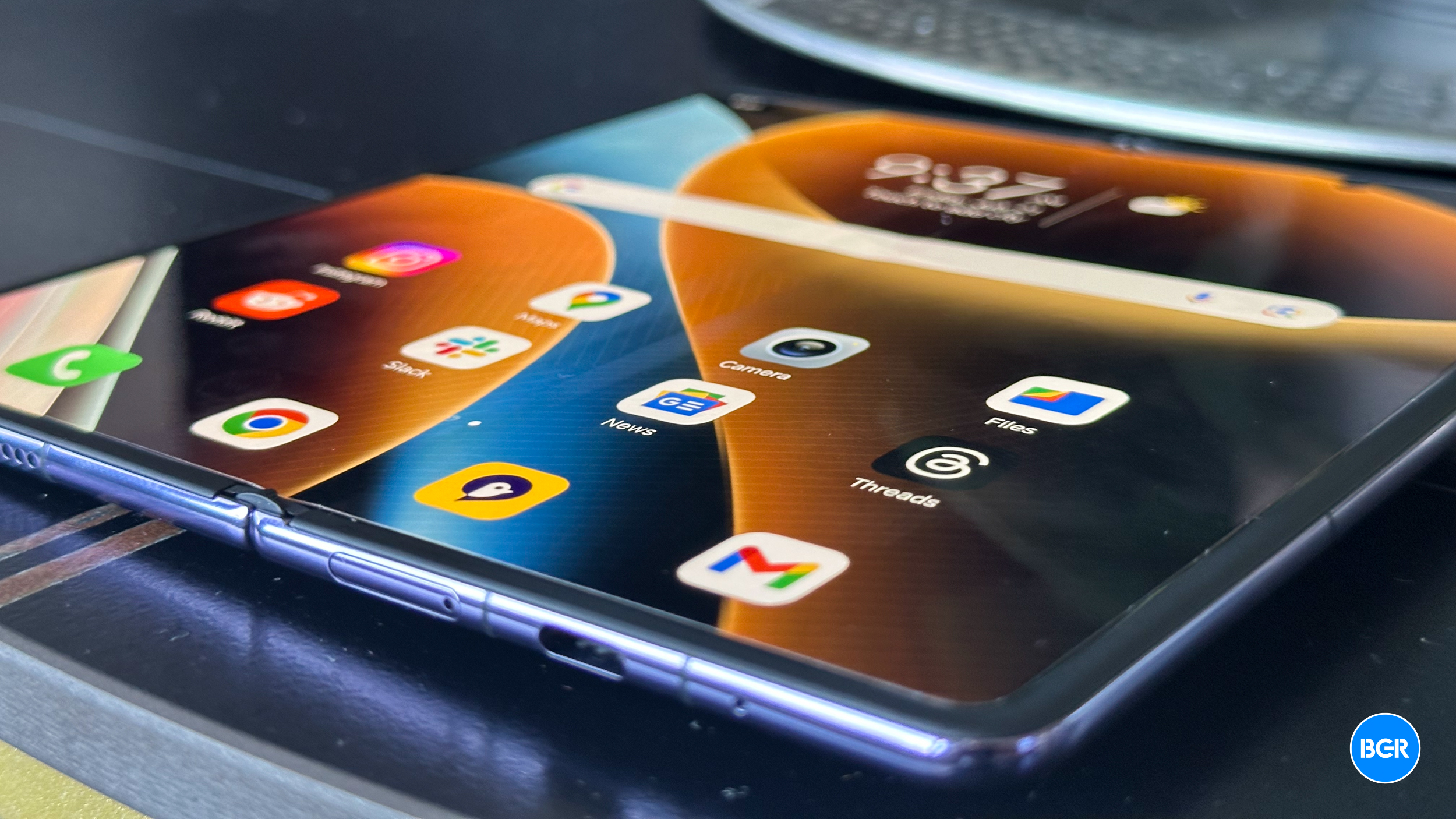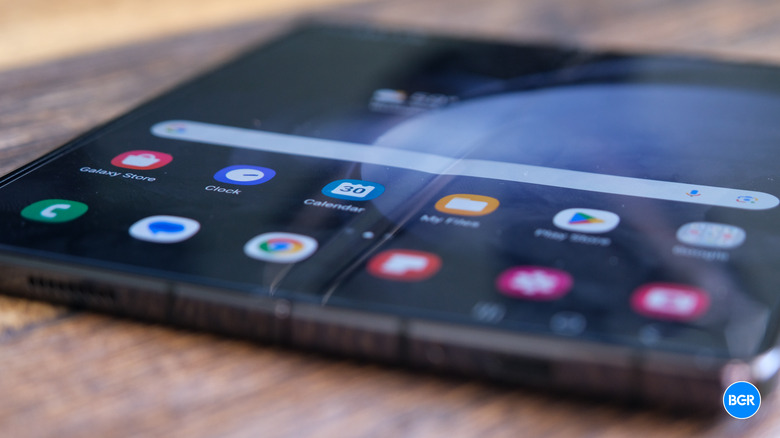This Is The Phone That Might Pave The Way To A Foldable iPhone
For years, rumors have said that Apple is working on a foldable iPhone as well as larger devices with foldable displays. The iPhone maker isn't in a hurry to compete against Samsung's Galaxy Z flagships, however, instead biding its time until better foldable tech is available. More recently, reports have claimed that Apple could debut a foldable Mac or iPad next year. A foldable iPhone might follow a year later.
Apple is easily one of the most secretive tech companies out there. It will never confirm rumors about unreleased products that may or may not be in development. But there is a different kind of leak that almost always comes true: Samsung Galaxy rumors.
It just so happens that there's a somewhat exciting Galaxy Z Fold 6 leak out there that might be very relevant for the foldable iPhone of the future. Apparently, Samsung will reduce the visibility of the crease that appears in the hinge section of a foldable display. That's a key innovation that Apple will surely want before it's willing to release a foldable smartphone of its own.
The rumor comes from reliable tipster Ice Universe, whose Galaxy-related scoops turn out to be accurate most of the time. According to a recent tweet, testers say the Galaxy Z Fold 6 will have a less visible screen crease compared to previous models.
Although the creases are not completely eliminated, according to testers, the Galaxy Z Fold6 does reduce the creases.
— PhoneArt (@UniverseIce) May 19, 2024
How bad is the crease on a foldable Galaxy Z Fold phone? Check out the top image, which shows the Galaxy Z Fold 5's foldable display. Yes, you can't unsee it. You can also feel the crease when touching the screen.
It's a foldable phone design compromise we couldn't escape in previous years. The hinge area is where the foldable display is the most vulnerable. The screen has to survive hundreds of thousands of folds. The crease is part of the hinge-and-display design that manufacturers like Samsung chose to guarantee the display's durability.
It's not just Samsung's foldable phones that have visible creases. All smartphone vendors have the same design problem. But while they're willing to proceed with commercial products that have this display "flaw," I'd be surprised if Apple launched a foldable device without "fixing" the screen first.

Reports have suggested in the past that this is a problem for Apple, one that Apple's supplier, Samsung Display, is desperately trying to fix.
Samsung Display is the company that provides screens for a variety of devices that Apple makes, including the brand new OLED iPad Pro. Samsung Display is also the main screen provider for the iPhone, and the company that introduced Ultra-Thin Glass (UTG) covers for foldable phones used in the Galaxy Z handsets. While Samsung makes foldable displays for other rivals, Apple would easily be a priority.
Apple would have its own requirements regarding a foldable display from Samsung. It won't just settle for off-the-shelf parts.
The OLED iPad Pro display is proof of that. Nobody in the industry has Tandem OLED panels right now, and early reports said Samsung was reluctant to make them for Apple. Eventually, Samsung relented, providing OLED panels to Apple according to the Cupertino company's specifications. LG also manufactures screens for the OLED iPad Pro.

With the foldable iPhone and Mac/iPad, I'd expect Apple to consider various screen providers. But Samsung is very likely to be at the top of the list.
That's why this Galaxy Z Fold 6 rumor is so important. If Samsung can significantly reduce the visibility of the crease this year, I'm sure Apple will pay attention. Rumors also say the next Fold flagship will be thinner and lighter than before. Therefore, Samsung would eliminate the crease while also changing the internal design of the foldable handset, including the hinge.
Durability concerns will remain. Samsung has to "fix" the crease problem without hurting the life of foldable displays. On that note, we recently saw a new patent discovery that shows Apple is working on self-healing display tech that could be applied to foldable iPhones in the future.
Right on cue, well-known Apple insider Ming-Chi Kuo said in a report that LG is working with Apple on developing a crease-free 18.8- to 20.25-inch panel for a foldable iPad/Mac. LG would be the exclusive provider of foldable panels for the device.
What I'm getting at is that there could be multiple approaches to delivering a foldable screen experience that resembles a non-folding smartphone display in the near future. It might start with the Galaxy Z Fold 6 and some of its rivals and continue with next year's series of foldable devices. And some of that tech might go into a foldable Apple device soon.
